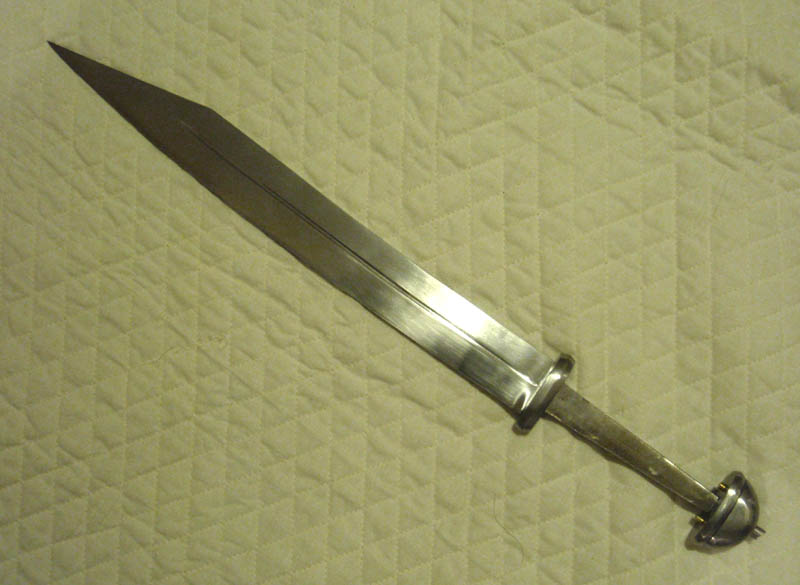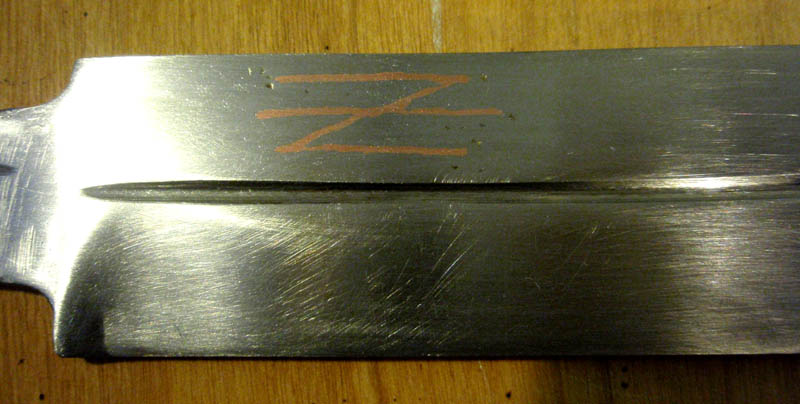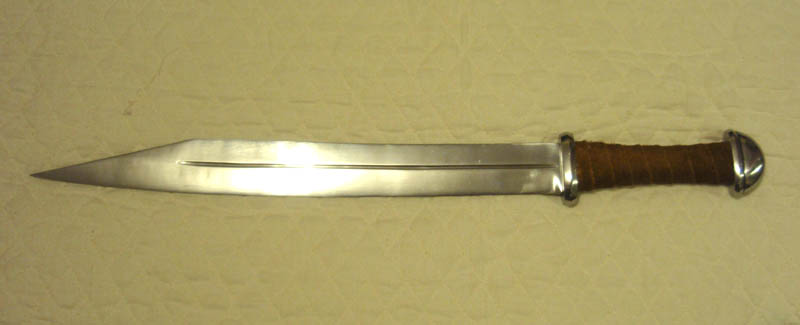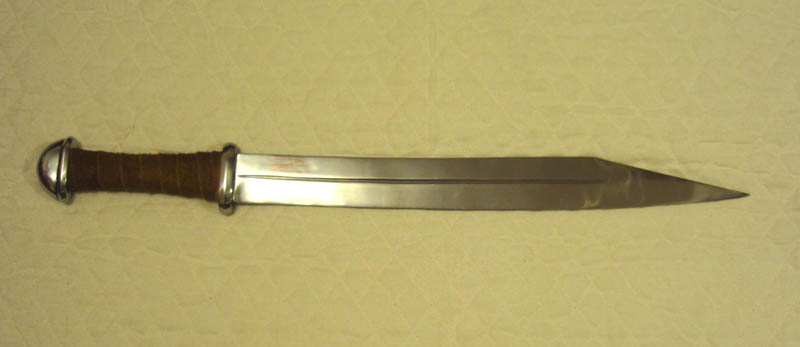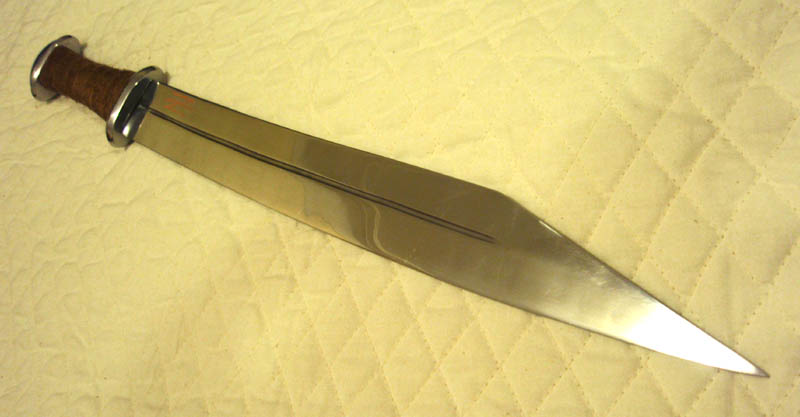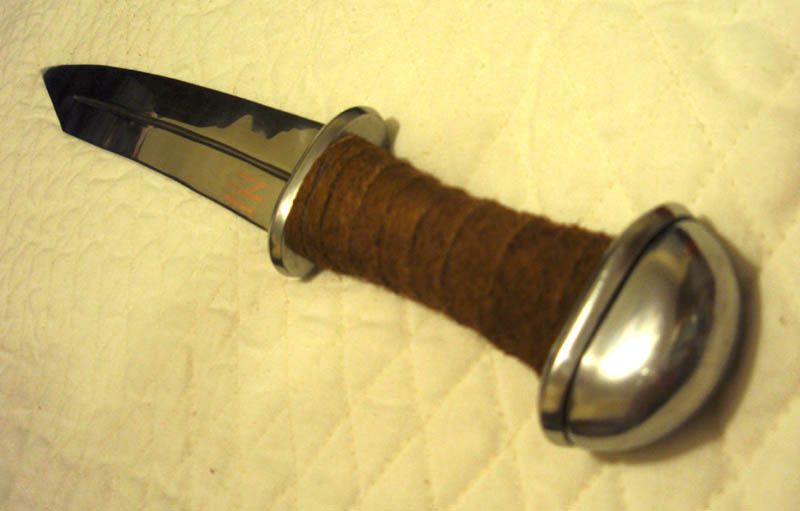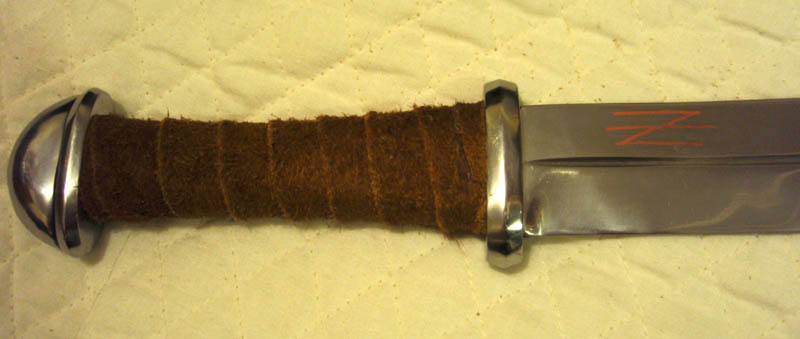As usual I'm posting a picture of something half finished. I'm quite proud of it as it's the first blade I've fully shaped on the anvil (apart from the fuller which I ground in later). As you can see it developed somewhat of a curve in the process and my question is this: Have I broken a cardinal rule for seax blades? I can't find a single picture of a Seax with anything other than a dead straight back.
I guess I'm hoping someone will chime in with a "don't be so foolish, many seaxes had curved backs. Here's a link... blah blah blah".
I just had another thought; if I had beaten in the fuller, would that have offset the curvature caused by the making of the bevel?
Out of interest, this blade started out as the other half of the leaf spring that went into this blade: http://www.myArmoury.com/talk/viewtopic.php?t=10227
Anyway thanks for your thoughts.
Nick.
